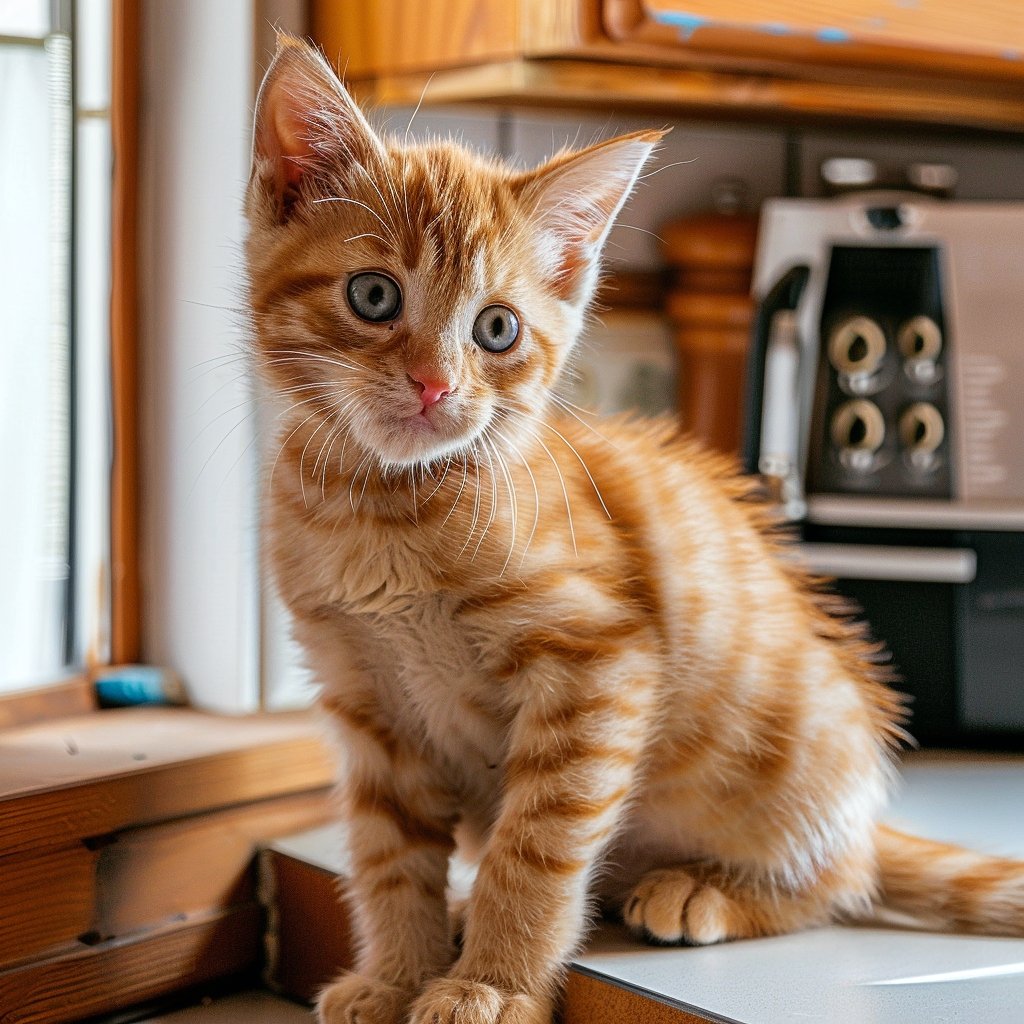Zeniquin, also known as marbofloxacin, is an FDA-approved antibiotic commonly prescribed for cats to combat various bacterial infections.
This medication is particularly effective for treating issues related to the bladder, kidneys, and skin.
Understanding how Zeniquin works and its proper usage can make a significant difference in your cat’s recovery.
When your veterinarian prescribes Zeniquin, it’s crucial to follow their recommendations regarding dosage and administration.
This drug typically comes in a dosage of 1.25 milligrams per pound of your cat’s weight, administered once a day.
You’ll want to keep an eye out for potential side effects to ensure your feline friend has a smooth recovery, as with any medication.
Taking this step to educate yourself about Zeniquin will empower you as a pet owner.
You’ll be better prepared to support your cat through their treatment, keeping them healthy and happy in the process.
Key Takeaways
- Zeniquin is an effective antibiotic for treating bacterial infections in cats.
- It’s essential to follow your veterinarian’s dosage instructions for safety.
- Being aware of potential side effects can help ensure your cat’s well-being during treatment.
Understanding Zeniquin
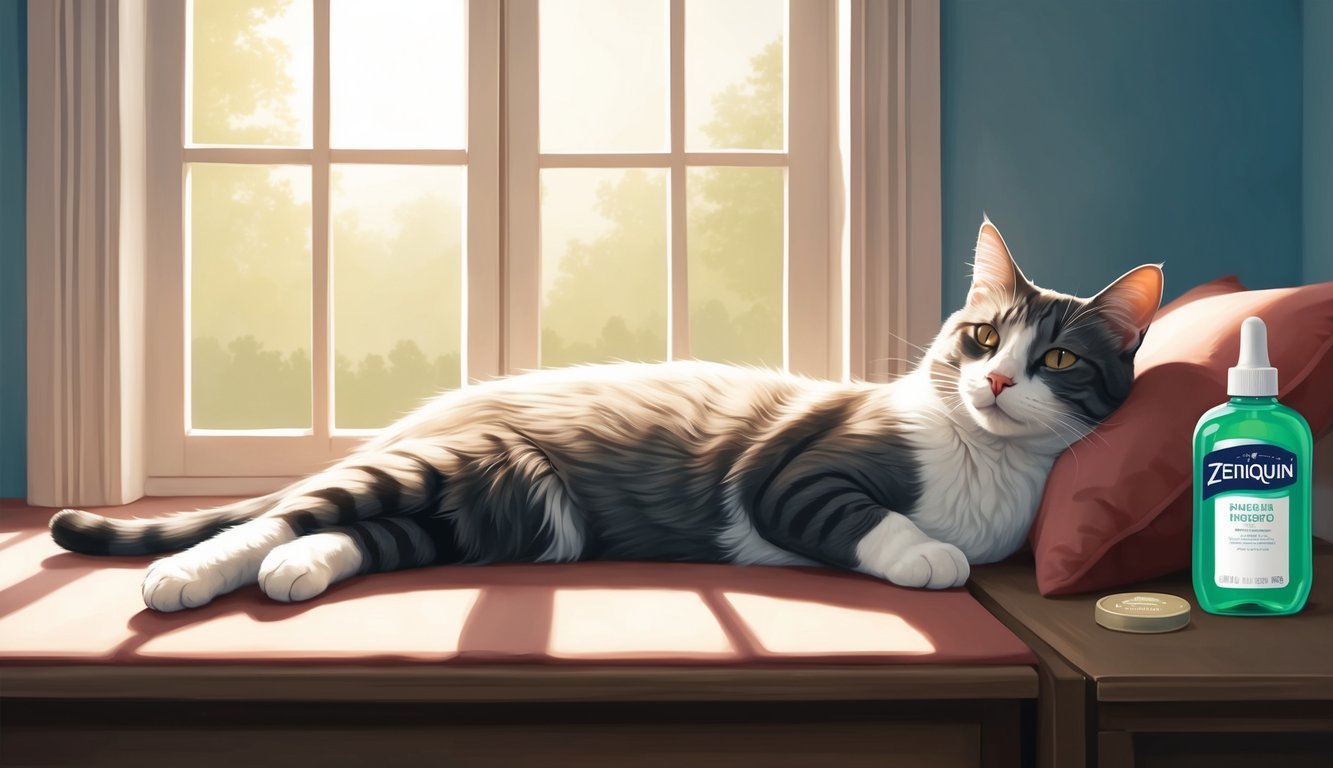
Zeniquin is a key antibiotic medication for cats and plays a crucial role in treating bacterial infections.
This section covers what Zeniquin is, its active ingredients, and how it works to help your feline friend recover from illness.
What is Zeniquin?
Zeniquin is an antibiotic specifically formulated for cats.
It is primarily prescribed to address various bacterial infections, which may involve the respiratory system, urinary tract, skin, and soft tissues.
The drug is part of the fluoroquinolone class of antibiotics, which are known for their broad-spectrum efficacy.
This means Zeniquin targets a wide range of bacteria, making it effective in treating multiple types of infections.
It’s important to use this medication under a veterinarian’s guidance to ensure proper treatment for your cat’s specific condition.
Active Ingredients in Zeniquin
The active ingredient in Zeniquin is marbofloxacin, a member of the fluoroquinolone class.
Marbofloxacin is recognized for its potent antibacterial properties.
This ingredient is effective against both Gram-positive and Gram-negative bacteria, allowing it to combat various infections effectively.
The medication’s formulation ensures that it delivers the necessary dosage tailored to your cat’s needs.
Your veterinarian will determine the appropriate dose based on your cat’s weight and the type of infection being treated.
How Zeniquin Works
Zeniquin works by employing a bactericidal mechanism, which means it kills bacteria rather than merely inhibiting their growth.
It does this by targeting bacterial DNA gyrase and topoisomerase IV enzymes, crucial for DNA replication and repair.
When Zeniquin interferes with these enzymes, it disrupts the bacteria’s ability to reproduce and survive.
This ensures that your cat’s immune system has the support it needs to fight off the infection effectively.
Administering Zeniquin as directed by your veterinarian is essential for achieving the best results in your cat’s recovery.
Uses of Zeniquin in Cats
Zeniquin is an antibiotic specifically designed for treating bacterial infections in cats.
It is particularly effective against various infections, which makes it a valuable treatment option for pet owners.
Below are its primary uses.
Treating Bacterial Infections
Zeniquin is commonly prescribed by veterinarians to combat bacterial infections.
It works by stopping bacteria from replicating, giving your cat’s immune system a chance to take control.
When your cat is diagnosed with an infection, timely treatment is crucial.
This medication targets Gram-negative bacteria, which are often responsible for severe infections, including those in the urinary tract and soft tissue.
Treatment with Zeniquin is generally effective, but always consult your veterinarian about the correct dosage and administration specifics.
Common Conditions Treated with Zeniquin
Zeniquin is used to address various conditions that affect cats.
The most frequent issues include:
- Urinary Tract Infections (UTIs): These infections are painful and can lead to complications if untreated. Zeniquin helps eliminate the bacteria causing the UTI.
- Skin Infections: Zeniquin can also treat skin infections, ensuring your pet is comfortable and healthy.
- Soft Tissue Infections: It effectively addresses infections in soft tissues, which may arise from wounds or other injuries.
Always monitor your cat during treatment for any side effects and follow your vet’s advice closely.
Dosage and Administration
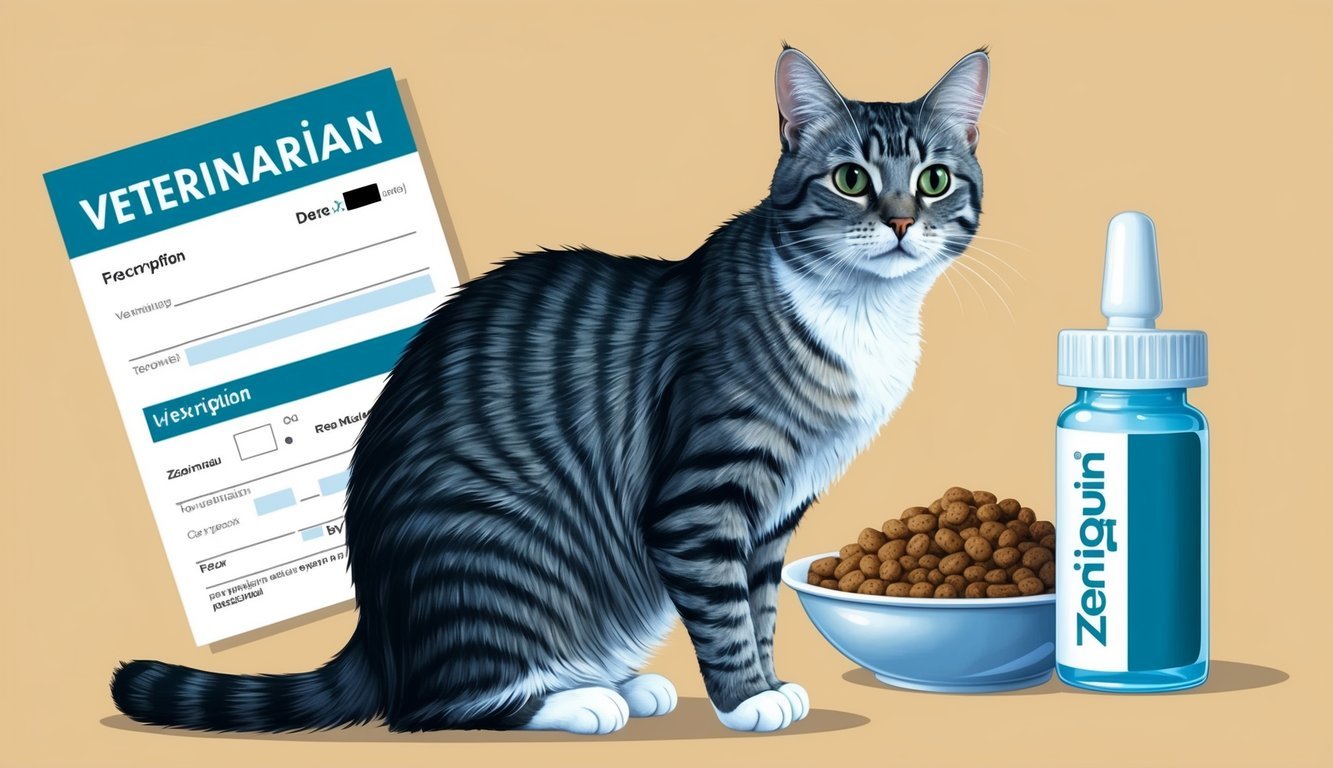
Administering Zeniquin for your cat requires careful attention to dosage and treatment duration.
Understanding the correct amounts and timing will help ensure the medication is effective while minimizing risks of side effects.
Proper Dosing Guidelines
For Zeniquin, the typical dosage is 1.25 mg per pound of your cat’s body weight.
This dosage is usually given once daily.
If needed, your veterinarian may suggest increasing the dose to 2.5 mg per pound for certain conditions.
When measuring your cat’s weight, it’s crucial to be accurate. Weight loss can change the dosing needs, so keep a close eye on your cat’s weight throughout the treatment.
Always consult your veterinarian before making any adjustments to the dosage.
Duration of Treatment
The length of treatment with Zeniquin can vary significantly based on the infection being treated.
For skin and soft tissue infections, the general recommendation is to continue for 2-3 days after clinical signs resolve, but no longer than 30 days.
Certain infections may require shorter treatment, perhaps only 5 days.
If you notice any adverse effects or your cat responds differently than expected, contact your veterinarian.
They can evaluate whether the treatment duration or dosage needs adjusting based on your cat’s response and overall health.
Potential Side Effects
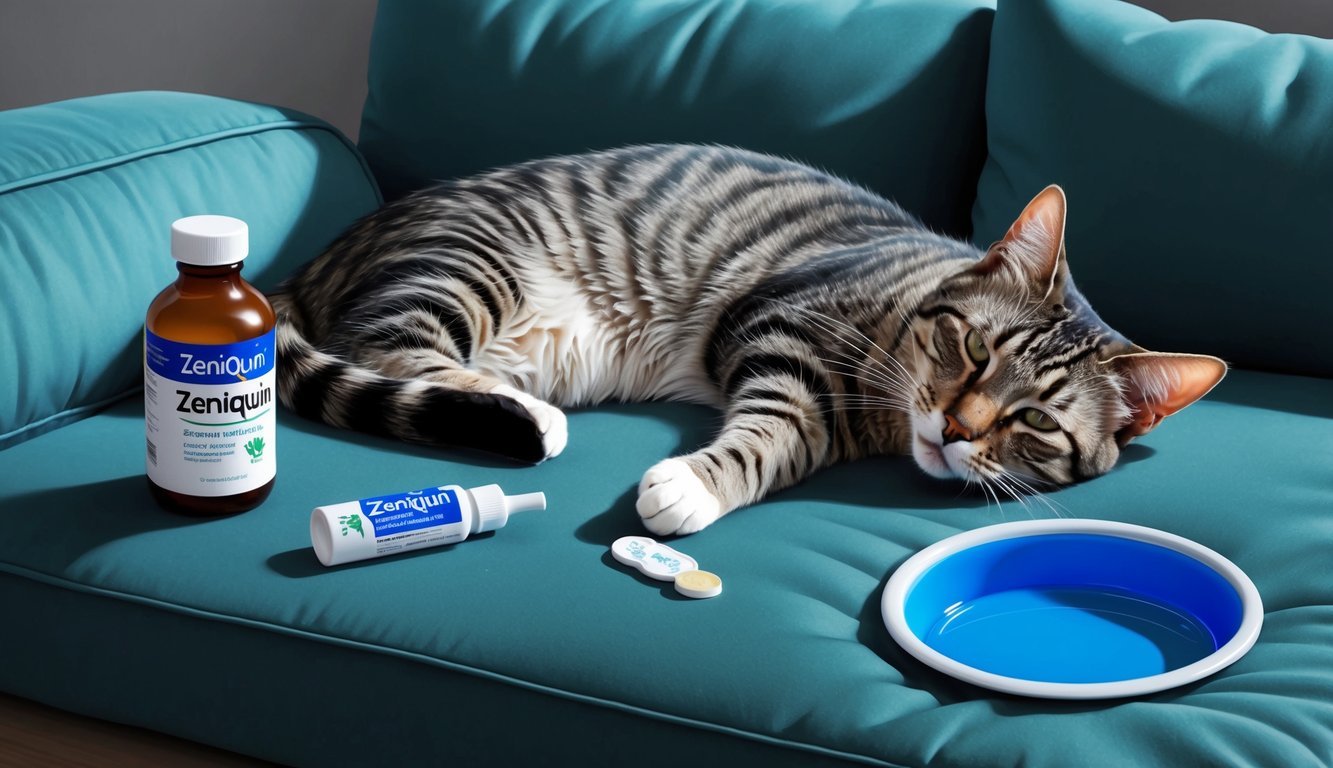
When using Zeniquin for your cat, it’s important to be aware of potential side effects.
While most cats tolerate the medication well, some may experience adverse reactions that need attention.
Common Side Effects
Common side effects of Zeniquin can include gastrointestinal upset like vomiting and diarrhea.
These can typically arise shortly after starting the medication.
Other possible reactions are loss of appetite and lethargy, where your cat may seem less active or reluctant to eat.
Some cats may even show behavioral changes, appearing withdrawn or agitated.
It’s essential to monitor your cat closely during treatment.
If you notice these symptoms, consult your vet for advice.
Keeping your cat hydrated can also help mitigate some gastrointestinal issues.
Serious Adverse Reactions
While serious side effects are rare, they can occur and may require immediate veterinary attention. Seizures are one possible reaction and may signal a severe response to the medication.
Another alarming reaction could be blindness or changes in your cat’s vision, which should be reported to the vet immediately.
Skin rashes, excessive salivation, or signs of dehydration like dry gums and lethargy are also serious.
If your cat displays symptoms of depression or becomes unresponsive, seeking veterinary care without delay is critical.
Always reach out to your vet if you have concerns about side effects during treatment.
Precautions and Safety Information
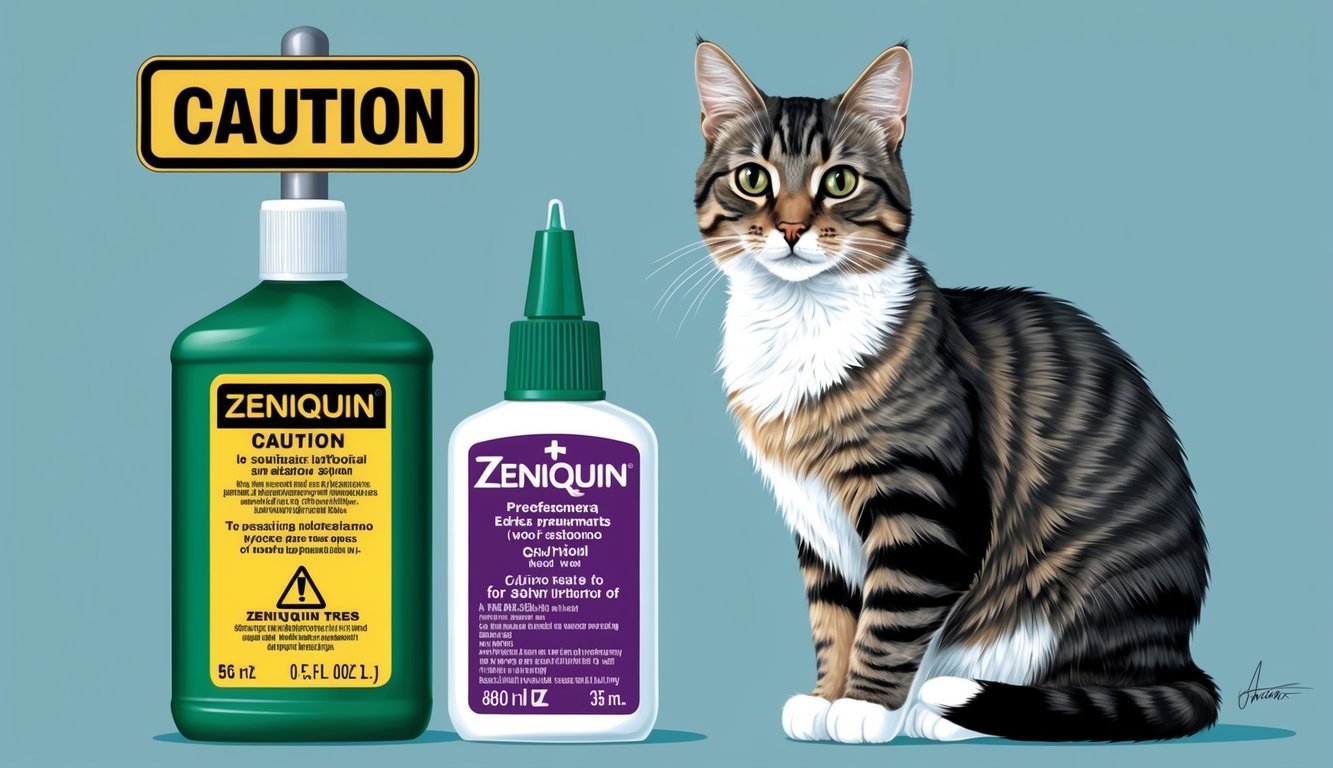
When considering Zeniquin for your cat, it’s essential to be aware of certain precautions and safety guidelines.
Proper administration and monitoring can help ensure your pet’s well-being throughout treatment.
Contraindications
Zeniquin should not be used in cats with a known hypersensitivity to marbofloxacin or other fluoroquinolones.
If your cat has a history of seizures, caution is necessary, as fluoroquinolones can potentially affect the central nervous system.
Avoid using Zeniquin alongside certain medications, such as anticoagulants and other antibiotics, unless directed by your vet.
These interactions can complicate treatment and may lead to adverse effects.
Always inform your veterinarian about any medications your cat is currently taking.
Cautions for Cats with Pre-existing Conditions
If your cat has pre-existing conditions, like liver or kidney issues, there are additional considerations.
Dosage adjustments may be needed to prevent toxicity.
Your vet might monitor renal function more closely during treatment.
Cats with seizure disorders require special attention.
Zeniquin can lower the seizure threshold, which means your cat may be more prone to seizures.
Discuss alternatives or additional precautions with your veterinarian if your cat falls into this category.
Regular check-ups during treatment can help identify any issues early on, ensuring your cat’s safety and comfort.
Interactions with Other Medications

When using Zeniquin (marbofloxacin) for your cat, it’s important to be aware of possible interactions with other medications.
Knowing which drugs to avoid and which combinations are generally safe can help ensure your cat’s treatment is effective.
Drugs to Avoid
Certain medications can interfere with how Zeniquin works. Sucralfate, a common treatment for ulcers, can bind to marbofloxacin.
This binding may reduce the effectiveness of the antibiotic.
To avoid any issues, administer these medications at least two hours apart.
Antacids containing magnesium or calcium can also pose a similar risk, so keep them separated by a couple of hours as well.
Additionally, dairy products can hinder absorption due to their calcium content and should be given with caution around the time of administration.
Safe Drug Combinations
While some medications pose risks, others can safely accompany Zeniquin during treatment.
Antibiotics may often be prescribed alongside it, depending on the infection being treated.
Always consult your veterinarian about any potential combinations.
If your cat requires pain relief, certain non-steroidal anti-inflammatory drugs (NSAIDs) can usually be given, but again, check with your vet first.
Signs of Overdose and What to Do
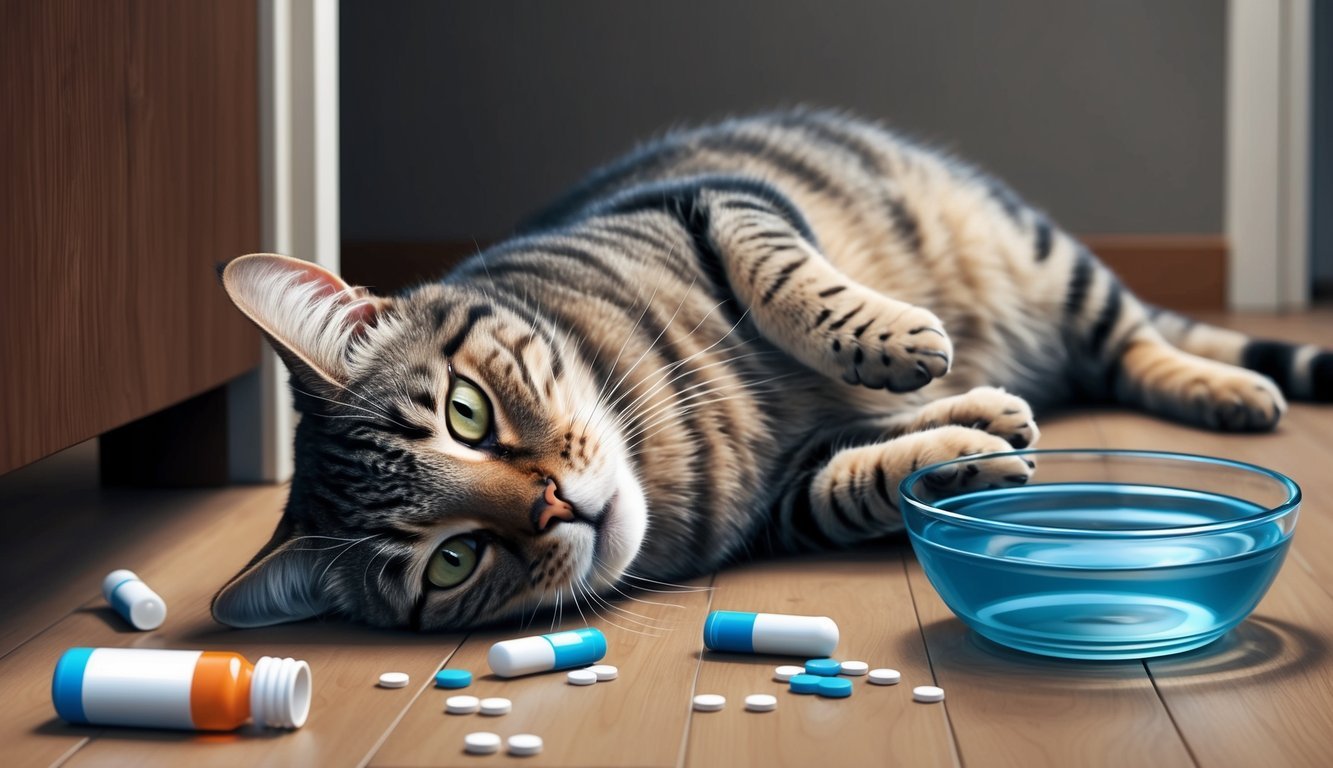
If your cat has taken too much Zeniquin, it’s important to recognize the signs of an overdose.
Here are some symptoms to look out for:
- Vomiting: This can happen shortly after an overdose.
- Seizures: Increased risk of seizures may occur.
- Behavioral Changes: Unusual behavior such as restlessness or lethargy might indicate a problem.
If you notice any of these signs, act quickly.
Contact your veterinarian immediately.
What You Should Do:
- Call Your Veterinarian: Always reach out to a vet if you suspect an overdose.
- Prepare Information: Have details like the medication name, dosage, and time of administration handy.
- Follow Instructions: Listen carefully to your veterinarian’s advice.
In some cases, the vet may recommend bringing your cat in for evaluation.
Be proactive and don’t wait for symptoms to worsen.
Owners’ Guide to Zeniquin
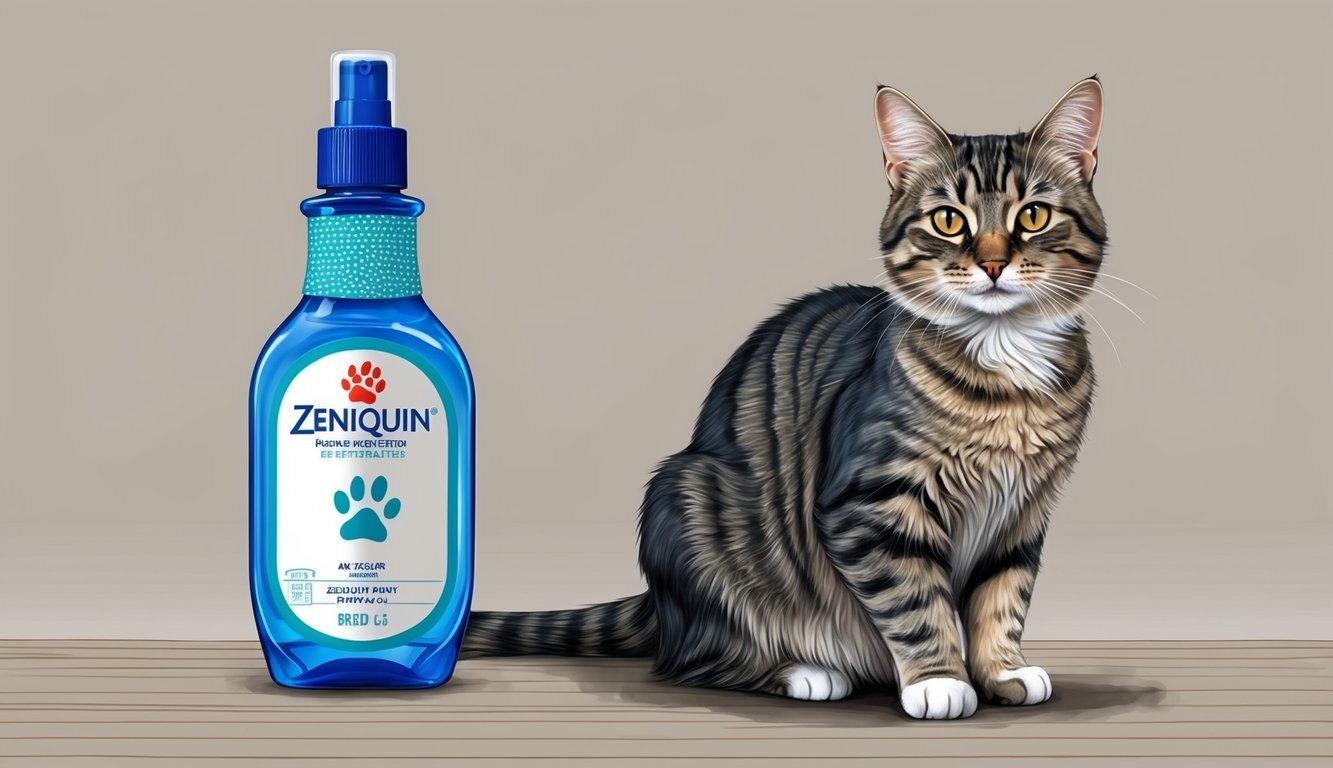
When your cat has been prescribed Zeniquin, it is crucial to understand pre-treatment considerations and how to monitor your pet during their course of medication.
This guide will help you ensure a safe and effective treatment experience.
Before Starting Zeniquin
Before you begin administering Zeniquin, consult your veterinarian to confirm that it’s the right choice for your cat.
Discuss any pre-existing conditions, especially if your cat has liver or kidney issues.
It’s also important to inform your vet about any other medications your cat is currently taking to avoid potential interactions.
Your vet may conduct tests to assess your cat’s overall health, which can guide the exact dosage needed.
Dosage is typically set at 1.25 mg per pound of your cat’s weight, taken once daily.
Follow your vet’s exact instructions on dosage and duration of treatment, which can range from a few days to several weeks, depending on the infection being treated.
Monitoring Your Cat on Zeniquin
While your cat is on Zeniquin, make sure to keep a close eye on their behavior and health.
Monitor their appetite, energy levels, and any unusual signs such as vomiting or diarrhea.
Watch for signs of allergic reactions, which can include itching, swelling, or difficulty breathing.
If you notice any of these symptoms, contact your veterinarian immediately.
Regular check-ins with your vet can help determine if the medication is working effectively or if adjustments are necessary.
Make sure to complete the entire course of the antibiotic, even if your cat seems to improve, to prevent any potential relapse.
Frequently Asked Questions
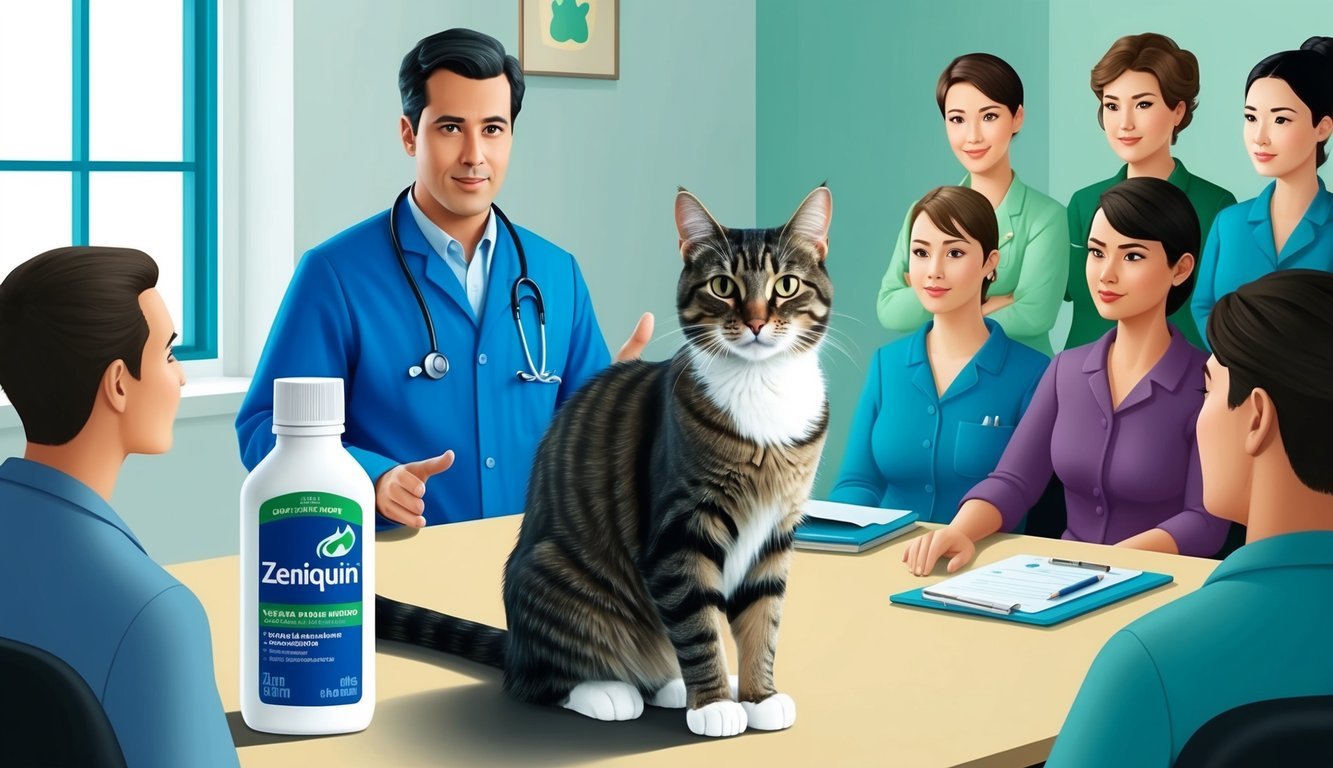
When considering Zeniquin for your cat, it’s important to be informed about its potential side effects, proper dosage, and the conditions it treats.
Here are answers to common inquiries you may have.
What are some potential side effects when giving Zeniquin to my cat?
Possible side effects of Zeniquin in cats can include vomiting, diarrhea, and loss of appetite.
It’s also crucial to monitor for any unusual behavior or signs of allergic reactions, such as swelling or difficulty breathing.
Always consult your veterinarian if you notice concerning symptoms.
How should I determine the proper dosage of Zeniquin for my cat?
The typical dosage of Zeniquin is about 1.25 milligrams per pound of your cat’s body weight, administered once daily.
It’s essential to follow your veterinarian’s specific instructions regarding dosage, as variations may occur based on your cat’s health needs.
For which conditions is Zeniquin typically prescribed in felines?
Zeniquin is prescribed primarily for bacterial infections affecting various body systems, including the respiratory and urinary tracts, as well as skin and soft tissue infections.
Your veterinarian will diagnose the specific condition requiring treatment.
Can Zeniquin be used to treat upper respiratory infections in cats?
Yes, Zeniquin can be effective for treating upper respiratory infections in cats caused by susceptible bacteria.
As always, consult your veterinarian to determine if this medication is appropriate for your cat’s particular situation.
Is it safe to crush Zeniquin tablets for feline administration?
Crushing Zeniquin tablets is generally not recommended unless advised by your veterinarian.
Altering the form of the medication can affect its efficacy or lead to unintended side effects.
Are there specific instructions for giving Zeniquin with or without food?
You can give Zeniquin with or without food.
Administering it with food may help minimize stomach upset.
Always follow your veterinarian’s recommendations regarding the best way to give this medication to your cat.

